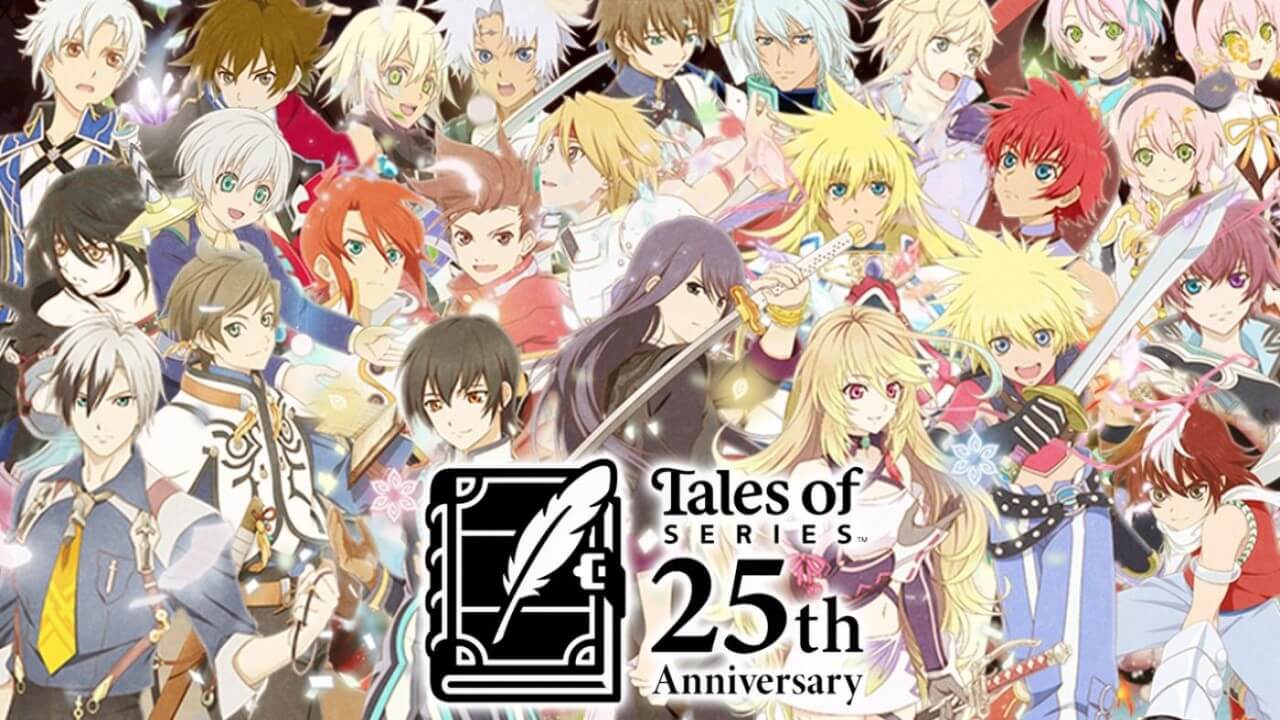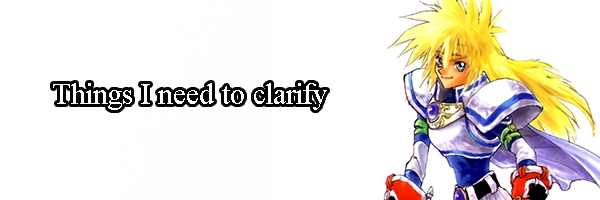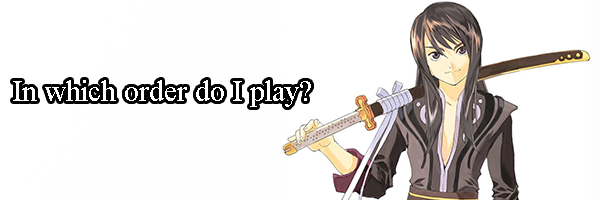

Wolf Team began development on a JRPG based on a novel called “Tale Phantasia”. They reached Square for help, but, sadly, they were not interested. However, Namco was. Since the full book could not be filled into a Super Nintendo cartridge, the team split. Some stayed with Namco and some others left and created their own video game company, known as Tri-Ace, creators of the Star Ocean series. Star Ocean is a good series too and maybe I’ll speak about it someday but, for now, let us focus on Tales.

- I will go with the general consensus of every entry instead of my own opinion. I want to be as unbiased as possible.
- I will avoid the official classification of the games, since it keeps changing every time the Namco Tales Studio does a big overhaul of itself, to avoid any confusion.
- Tales has always been an Action RPG series since its conception.
- Most Tales are independent from each other. There are a couple exceptions but I will go over them later.

- Tales of Phantasia: The first entry in the series, launched in 1995. It has a lot of versions, but the one I will recommend is the Playstation 1 version, patched in English by the community.
- Tales of Destiny: This one was the first to reach the United States, but not Europe. Therefore, it is available in English for the Playstation 1, but it is also extremely dated. It has a remake for the Playstation 2 that has been recently patched in English by the community. The only thing missing from the patch is the plot summary (And let us be real, almost nobody bothers to read that).
- Tales of Eternia: This is where confusion begins. In the United States, this one got renamed to Tales of Destiny II. In any other country, it is called Tales of Eternia. It has two versions, one for the Playstation 1 and one for the PSP. Both are officially translated and basically the same. The PSP version only made it to Japan and Europe, though.
- Tales of Destiny 2: You are reading this correctly. There is a “real” Tales of Destiny 2. In any case, it is Japan exclusive and has not been translated as of now.
- Tales of Symphonia: Often regarded as the Final Fantasy VII of the Tales Series, it was the first big hit the franchise had in the West. It is also the first entry with 3D environments. Was officially translated and it is available in the Nintendo Gamecube, Playstation 3 and PC. It is worth noting that the Gamecube version has a little less content (Nothing special, really) but runs at 60 FPS. Symphonia is an excellent entry point to the franchise.
- Tales of Rebirth: Japan exclusive.
- Tales of Legendia: The first controversial entry. It has a good plot, extremely good character development, awesome music and it is also really, really long. So long only half of the game is dubbed in English. The combat is the most dated in the entire series by far. Legendia was made by another team and it shows, for both good and bad. It is officially in English for the Playstation 2. Sadly, this one did not reach Europe (And would not be the last one).
- Tales of the Abyss: Alongside Symphonia and Vesperia, Abyss is usually considered part of the Holy Trinity of Tales games. This is the first entry with 3D movement inside of combat. It has a really good plot and character development, excellent world-building and antagonist… Really good game all around. It is available on Playstation 2 and the 3DS, both officially in English.
The 3DS version fixes some bugs and glitches, but has no extra content aside from the 3DS own capabilities. The Playstation 2 version missed Europe (Again).
- Tales of the Innocence: This one has two versions, one on the Nintendo DS (Translated by the community) and a remake on the Playstation Vita (In the process of being translated by the community). Just an okay game.
- Tales of Vesperia: Another great one. It has a Definitive Edition recently and it is available for the Playstation 4, Xbox One, Nintendo Switch and PC. It has an official translation to English. Great cast of characters, really fun gameplay, good music…
- Tales of Hearts: Another one with a Nintendo DS version and a Playstation Vita remake. Sadly, I have not played the DS one myself, so I can only speak for the Vita remake. It is a cheap game when it comes to budget, but manages to be a classic Tales experience and an okay game overall. Not a masterpiece, not terrible, just fine. The Vita remake is in English officially. Sadly, it does not have an English dub.
Note: From this point on all main entries are officially translated.
- Tales of Graces F: Available for the Playstation 3. It has an awful start, but it gets extremely better after the first three hours, when the combat system opens up. In fact, it has one of the most well regarded combat systems in the whole series. Plot is your average “Power of friendship” adventure. This is an entry you should play if you just want to have lighthearted fun.
- Tales of Xillia: Available on Playstation 3. Good story and cast of characters and a really fast paced combat. But, most importantly, it is really newcomer friendly and a little shorter than other Tales games. It can be finished in around 35 to 45 hours. The postgame is lackluster, at least by Tales standards.
- Tales of Xillia 2: Another Playstation exclusive. This one is a really divisive entry. You will either love it because of its plot, characters and extremely good combat system or hate it because of its weird mechanics. Personally, I consider this one to be the Majora’s Mask of the Tales Series (Including the darker tone).
- Tales of Zestiria: Yet another divisive entry, this time available on Playstation 3, Playstation 4 and PC. I only played the PS3 version myself, so please keep that in mind. Performance was terrible, alongside really bad camera issues and an equipment system a lot of people despised. It also was the first and last attempt of an open world Tales game. It had a very simple plot, colorful characters, amazing soundtrack and puzzles… Another love or hate entry.
- Tales of Berseria: This one, however, is a mostly loved entry. It fixes all the performance issues from Zestiria and goes back to the old style of world map. People often praise its plot and female protagonist. It is available on Playstation 4 and PC.
- Tales of Arise: The newest entry in the series, recently released. Available for Playstation 4, Playstation 5, Xbox One, Xbox Series and PC. The reception has been mostly positive and it is another newcomer friendly entry.

Since a lot of main entries did not get out of Japan or took years to do so, the number of side games available for us Tales fans can be counted with one hand. That being said, there are a couple worth mentioning.
- Tales of Symphonia – Dawn of the new world: This one is a Tales of Symphonia sequel. It takes place two years after the end of that game. It is a decent enough game by itself but a terrible sequel. Think of it as the Final Fantasy X-2 of the Tales Series. It is available in English officially in both the Nintendo Wii and the Playstation 3 version of Tales of Symphonia. It is important to mention that this one spoils all of Tales of Symphonia’s twists and turns in the first five minutes.
- Tales of the Tempest: Another one for the Nintendo DS. The community made an English patch as an April’s Fools joke. It is a ten hour game. Ten horrible hours. Bad programming, bad AI and a laughable plot. Believe me, you are not missing anything here. If the previous one can be compared to Final Fantasy X-2, this one would be Sonic 06. Play only for laughs at the expense of the game.
Okay, now we have covered all the important games in the series. But where do I begin? You ask. Well, there are three different orders I can tell you to go.

Order one: Begin with Symphonia and continue with Abyss and Vesperia. After that, you can either play Graces or Xillia. After one (Or the two) of those, you can try Berseria and Arise. If you still want more Tales, then you can try the old or more controversial games.
Order two: Basically go in reverse to the previous one. Start with Arise and continue with Berseria, the first Xillia, Graces if you want to, Vesperia, Abyss and then Symphonia. Again, play the old or controversial games if you want more after those.
Order three: Start with the first Xillia and go either up or down in the series. Tales of Xillia is a fine JRPG, not very long, extremely newcomer friendly and it uses a lot of Tales tropes that you are going to encounter very often in the series.
Any of these three orders is completely fine depending on the games you are more curious about or if you mind playing older games later or not. Before we jump to the last section of this article, I want to clarify that I did not include the Tales of Destiny remake in any of these orders because I have not played that one myself yet. Therefore, I can not recommend it.
Like I mentioned before, most Tales are its own world. But which ones are not? Well…

Aselia Timeline: Tales of Phantasia, Tales of Symphonia and Dawn of the new world take place in the same universe. However, there are 4000 years between Phantasia and Symphonia, with the later being a prequel, so you will only miss references no matter which one you play first.
Destiny timeline: Tales of Destiny 2 is a remake to Tales of Destiny, but not the remake, only the original one. In any case, it does not matter, since the Tales of Destiny 2 plot revolves around time travel anyway.
Xillia timeline: Tales of Xillia 2 is a sequel to Tales of Xillia, set two years after the events of the first one. Xillia 2 has a summary of the previous one. You could technically play the sequel first… If you do not mind getting everything from the first spoiled, that is.
Zestiria-Berseria timeline: Berseria is a prequel to Zestiria. However, it is also the same situation as the Aselia timeline. They can be played in any order. You will only miss references.
And that would be it. If you still have any questions, go ahead and ask!
